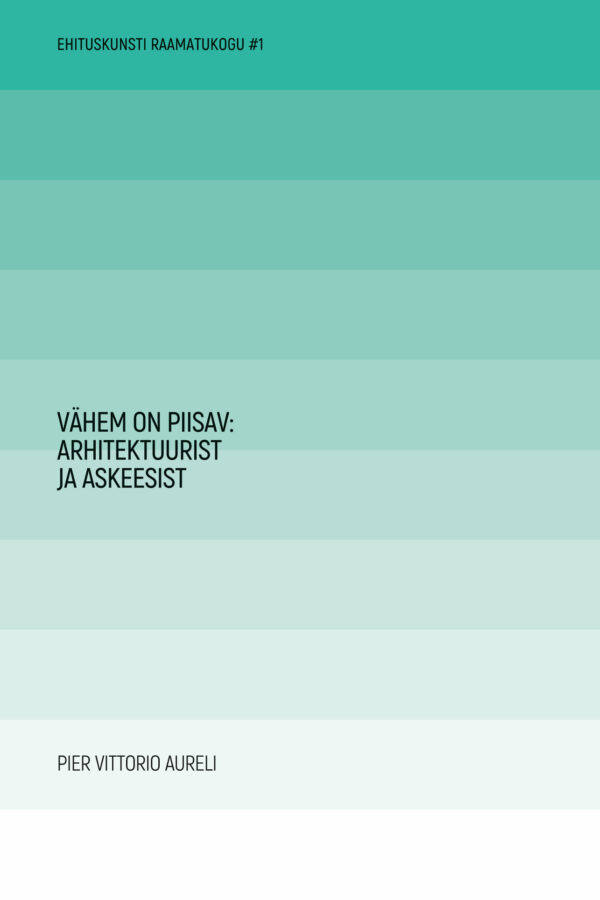
Pier Vittorio Aureli’s book “Less Is Enough: Architecture and Asceticism” describes how the idea of minimalist design and architecture has been alienated today in the service of aesthetic elegance and a cynical economic model. Instead of satisfying elementary needs, “doing more with less” today rather refers to the demand for greater work efficiency or justifies the contraction of social programs under the auspices of the austerity ethos. Aureli asks whether and how we can, despite such an atmosphere, refuse the moral blackmail of the debt economy and arrive at the idea of minimalism, which would offer a radical alternative to it in the form of a meaningful ascetic way of life, where less does not necessarily have to be more, but can be completely sufficient.
Pier Vittorio Aureli (1973) is a contemporary architect and theorist who teaches mainly in London and as a visiting professor at Yale University in the United States.
The Library of Ehituskunst is a book series of the Estonian Academy of Arts. As part of this, additional collections of the magazine Ehituskunst as well as works that are more broadly relevant to architecture and wider spatial practice will be published.
Translated by Eik Hermann
Edited by Neeme Lopp
Language editor: Tiina Hallik
Design: Martin Rästa
47 pages, in Estonian
Estonian Academy of Arts Press, 2017
ISBN 978-9949-594-44-3
ISSN 2585-5603
